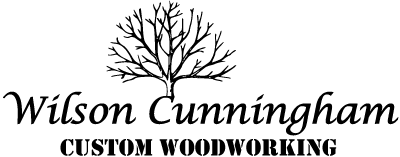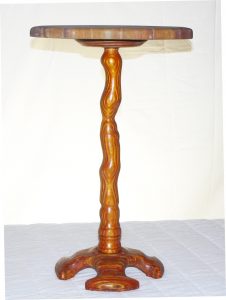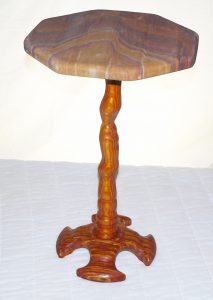Plywood edge furniture

Plywood’s perceived features:
- sheet material of standard width, length, thickest
- building materials available at the home center,
- cheaper than solid wood ($/square foot),
- more dimensionally stable than solid wood,
- thin surface veneers prone to splintering and “sand-through” during finishing,
- requires edge treatment to hide the ply construction,
- Bottom line many think plywood should be restricted to unseen surfaces ( e.g. drawer bottoms, cabinet shelves and backs) or not used at all in fine furniture.
Other than architectural woodworking (also see Library ) WCCWOOD restricts plywood usage to unseen furniture surfaces. However, an abundance of smaller scrap pieces of multiple-thin-ply hardwood plywood accumulates because furniture is designed to optimize form and function rather than minimizing the waste from the modal 4X8 sheets. These scraps are stiffer, smoother uniform surface with fewer internal voids than the thick plied “CDX” grade used for house construction. Without glue-laminating several pieces together, its utility is limited projects requiring thickness of 3/4 inch or less. Most scrap ends up as templates or utility pieces or taking up material storage space.
Using exposed plywood edges as a design element
When making some templates, a cut across a glue laminated surface exposed a swirling pattern of color and texture created by the ply layers. This swirl was used to create an visual design affect (see three dimensional surface ) and showed a new potential way to move the scrap from storage to furniture.
A 2 1/2 inches square blank was made from 24 inches long plywood strips. The plywood grain pattern was highlighted by off-centered turning the pedestal central column . The table base was a “bowl” turned from a 14 inches square (2 1/4 inches thick) lamination. Removal of four areas and rounding the sharp transition points with a rasp completed the table base. A sandstone top cut in an octagonal shape completed the table.
Your “plywood sculpture” can be specified at findoutmore@wccwood.com.


